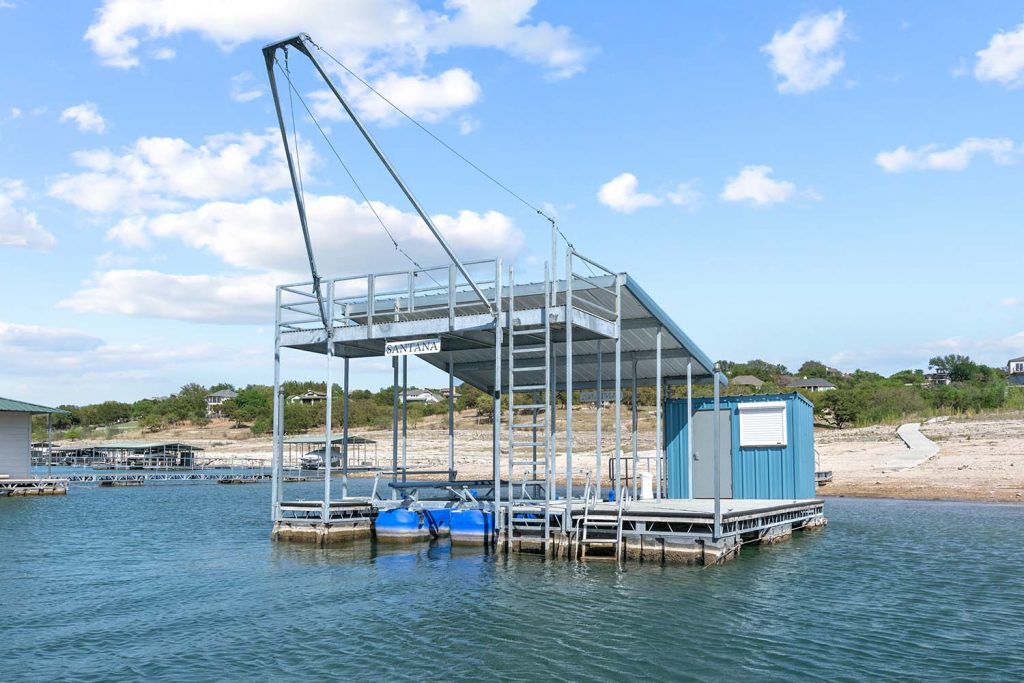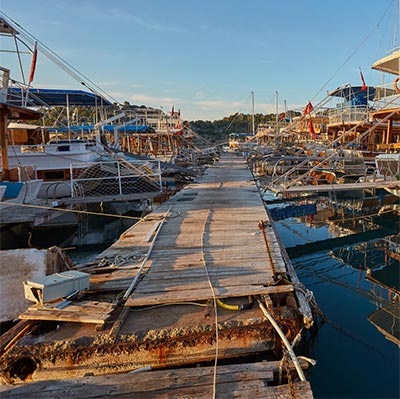Specialist Insights on Resilient Dock Repairs Solutions
Specialist Insights on Resilient Dock Repairs Solutions
Blog Article
Reliable Dock Repair Service Techniques: Making Certain Structural Honesty
Ensuring the structural honesty of docks via efficient repair work strategies is extremely important for the long life and safety and security of marine centers. This includes a multi-faceted method beginning with thorough inspections making use of innovative innovations like finder devices and remotely ran cars (ROVs) to spot both noticeable and hid damages. Ultimately, selecting the ideal repair service products, such as composite materials and corrosion-resistant alloys, is important for sturdiness. Structural support approaches, including the execution of cross-bracing systems and load-distribution plates, play an essential function in mitigating stress factors. The significance of these techniques becomes evident when checking out advanced repair work approaches and preventative maintenance methods.
Examining Dock Damages
Analyzing dock damages is an essential initial step in making sure the architectural honesty and safety of any kind of docking facility. This first evaluation includes a thorough examination to determine both covert and visible damages. Key aspects to examine include the dock's foundation, pilings, outdoor decking, and equipment. Each part has to be looked at for indicators of wear, rot, corrosion, or other types of destruction that can endanger the architectural honesty.
Architectural engineers or qualified inspectors normally do these evaluations utilizing specialized tools and techniques. Underwater evaluations might use finder devices or remotely ran lorries (ROVs) to detect submerged damages. Above water, aesthetic evaluations are complemented by using wetness meters and various other analysis devices to discover underlying issues not immediately noticeable to the naked eye.

Choosing Repair Work Materials
Choosing the proper fixing products is a pivotal action in the dock remediation procedure, one that directly affects the long life and efficiency of the fixed framework. Material choice must be driven by aspects such as environmental conditions, load-bearing demands, and compatibility with existing dock parts. Timber is a traditional selection for docks due to its natural durability and visual allure. However, choosing the appropriate kind of timber, such as pressure-treated lumber or normally rot-resistant varieties like cedar or teak wood, is critical to withstand aquatic settings.
In enhancement to timber, composite materials are significantly popular because of their durability and reduced maintenance requirements. Compounds, usually made from a blend of plastic and timber fibers, use outstanding resistance to rot, pests, and UV damage. For steel docks, picking corrosion-resistant alloys such as galvanized steel or marine-grade aluminum is necessary to protect against rust and make certain structural honesty in saline water conditions.
Epoxy resins and marine-grade sealers are essential for fixing splits and securing joints, offering a water-proof barrier and improving the dock's general toughness. By meticulously choosing high-grade materials, dock repair work can accomplish lasting outcomes, therefore safeguarding against future deterioration and making certain secure, dependable use.
Structural Reinforcement Methods
Efficient architectural support strategies are critical in guaranteeing the stability and durability of dock repair services. One basic approach entails using steel or composite reinforcement bars (rebar) within concrete frameworks. Rebar supplies extra tensile stamina, stopping splits and dispersing tons a lot more uniformly. This technique is especially reliable for anchors revealed to hefty lots or extreme ecological problems.
Another crucial strategy is the application of fiber-reinforced polymers (FRP) These products provide high strength-to-weight ratios and excellent resistance to deterioration, making them suitable for strengthening concrete or wooden anchors. FRP can be used in sheets or strips and bound with epoxy materials to enhance structural integrity.
Supporting and securing systems additionally play a crucial function in architectural reinforcement. Cross-bracing, making use of steel or wooden beam of lights, can combat side forces, decreasing guiding and activity. Anchoring systems, such as helical piers or driven stacks, provide a steady structure by moving tons to much deeper, more stable soil layers.
Lastly, the assimilation of load-distribution plates can help disperse weight extra evenly throughout the dock's surface, mitigating localized tension factors. These strategies collectively make sure that anchors continue to be robust and risk-free, qualified of moved here enduring the rigors of their operational setting.
Advanced Repair Service Methods

Another sophisticated method includes underwater welding, which enables repair services to be carried out without the requirement to dewater the area. This technique is especially beneficial for attending to architectural problems in immersed dock elements, guaranteeing minimal disruption to operations. Boosted welding strategies, combined with robotic systems, deliver precision and integrity, consequently extending the lifespan of the dock.
In addition, cathodic defense systems are carried out to avoid rust in metallic dock frameworks. By utilizing sacrificial anodes or amazed current systems, these strategies properly alleviate the electrochemical processes that lead to product degeneration.
Finally, advanced surveillance innovations, such as structural wellness tracking (SHM) systems, provide real-time information on the condition of dock frameworks. These systems make it possible for positive upkeep and prompt interventions, eventually guaranteeing the lasting architectural integrity of the dock.
Upkeep and Avoidance
Maintenance and avoidance are fundamental principles that underpin the durability and safety and security of dock structures. Normal evaluations are paramount, permitting early detection of wear and tear, prospective weaknesses, and ecological impacts. A positive approach, including regular checks for rust, rot, and architectural shifts, minimizes costly link repair services and prolongs the dock's operational life.
Safety nets need to include applying safety coverings to steel parts to defend against corrosion and using treated wood to stand up to decay. Furthermore, making certain proper drain and air flow can protect against water accumulation, which is a common source of architectural destruction. Incorporating quality materials and sticking to manufacturer guidelines during building and repair service phases also play important duties in boosting sturdiness.

Educating personnel in dock maintenance ideal methods makes sure consistent application of safety nets. Leveraging technical advancements, such as drones for inspections and sensing units for real-time tracking, can further enhance maintenance initiatives. Continued By prioritizing upkeep and prevention, dock owners can guarantee structural stability, operational safety, and economical monitoring over the dock's lifespan.
Conclusion
In final thought, keeping the structural stability of aquatic centers demands comprehensive dock repair service strategies. Advanced fixing techniques, combined with routine upkeep techniques, ensure the dock stays secure and operational under diverse environmental conditions.
Ensuring the structural stability of docks with efficient repair techniques is paramount for the durability and safety of marine facilities.Choosing the proper repair service products is an essential action in the dock repair procedure, one that directly influences the longevity and performance of the fixed framework.Reliable architectural support methods are vital in making sure the stability and durability of dock repair work. By prioritizing upkeep and avoidance, dock proprietors can guarantee structural integrity, functional safety and security, and cost-efficient administration over the dock's life expectancy.
In conclusion, maintaining the architectural stability of marine centers demands detailed dock repair work techniques.
Report this page